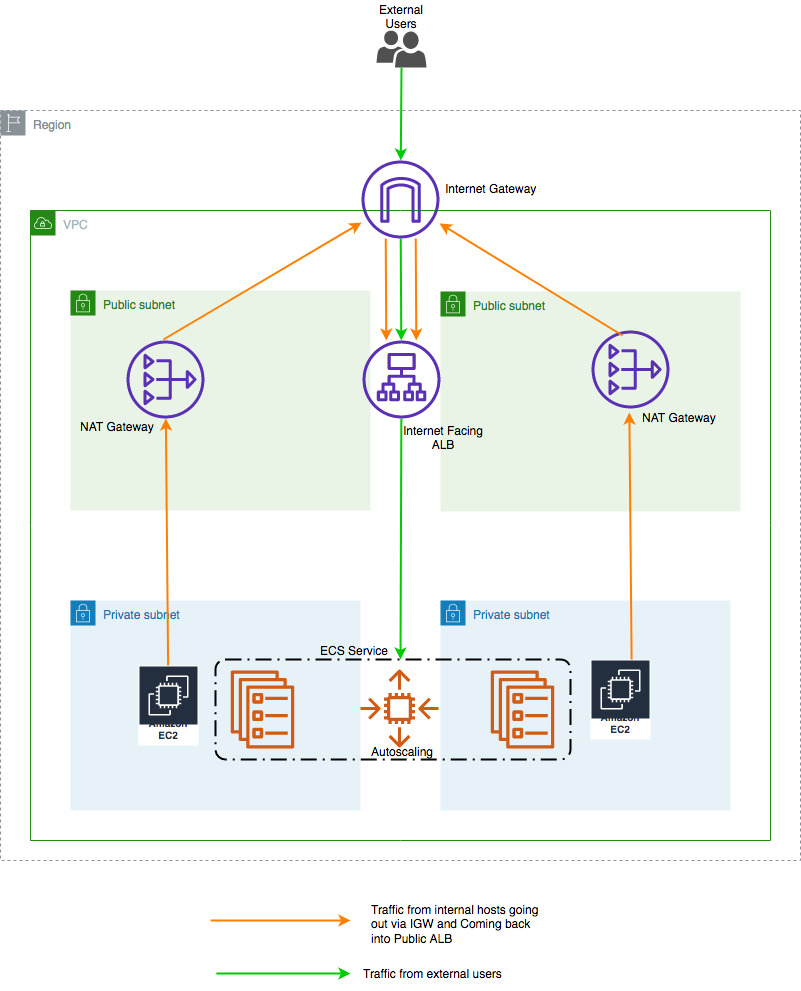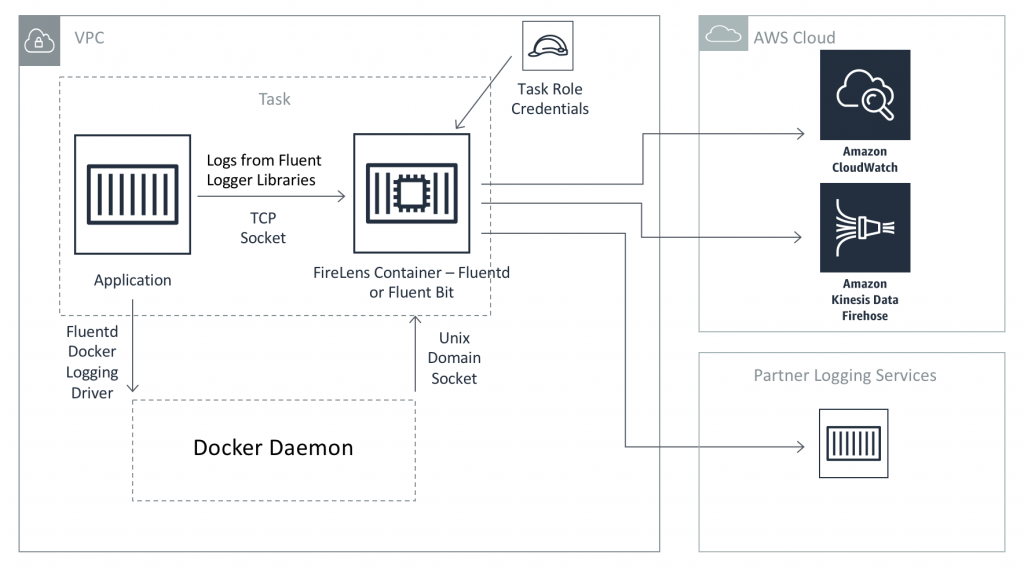Containers
Category: Advanced (300)
How to use Multiple load balancer Target Group Support for Amazon ECS to access internal and external service endpoint using the same DNS name
Customers running container-based applications on Amazon ECS using Amazon EC2 (commonly referred to as EC2) or AWS Fargate, frequently need to expose the application to both external clients and internal clients within the Amazon VPC (commonly referred to as VPC). In this blog post, we will look at a solution to optimize cost and reduce […]
Under the hood: FireLens for Amazon ECS Tasks
September 8, 2021: Amazon Elasticsearch Service has been renamed to Amazon OpenSearch Service. See details. Recently, Amazon ECS announced support for custom log routing via FireLens. FireLens makes it easy to use the popular open source logging projects Fluentd and Fluent Bit; enabling you to send logs to a wide array of AWS Services and […]
Cost optimization for Kubernetes on AWS
Since publication, we reduced the price for Amazon Elastic Kubernetes Service (EKS) by 50% to $0.10 per hour for each Kubernetes cluster that you run. This post was contributed by AWS Container Hero, Casey Lee, Director of Engineering for Liatrio The combination of Amazon EKS for a managed Kubernetes control plane and Amazon EC2 for […]
Cross Amazon EKS cluster App Mesh using AWS Cloud Map
Overview In this article, we are going to explore how to use AWS App Mesh across Amazon EKS (EKS) clusters. App Mesh is a service mesh that lets you control and monitor services spanning two clusters deployed in the same VPC. We’ll demonstrate this by using two EKS clusters within a VPC and an App […]
How to Run EKS Windows containers with group Managed Service Accounts (gMSA)
Windows-based networks commonly use Active Directory to facilitate authentication and authorization between users, computers, and other computer network resources. Traditionally, enterprise applications running on Windows platforms use either service accounts or Managed Service Accounts (MSA) for authentication and authorization. The use of service accounts brings with it the overhead of service account password management. In […]
Using Gloo as an Ingress Gateway for AWS App Mesh
As part of their organization’s digital transformation, more and more customers are electing to use a managed Kubernetes service, like Amazon EKS, as their container-orchestration system of choice to deploy, scale, and manage microservices. As the number of microservices grow within an application, it becomes difficult to pinpoint the exact location of errors, re-route traffic […]
Amazon ECS availability best practices
We spend a lot of time thinking about availability at AWS. It is critically important that our service remains available even during inevitable partial failures in order to allow our customers to gain insight and take remedial action. To achieve this, we rely on the availability afforded us by Regional independence and Availability Zones isolation. […]
AWS PrivateLink ECR cross account Fargate deployment
AWS PrivateLink is a networking technology designed to enable access to AWS services in a highly available and scalable manner. It keeps all the network traffic within the AWS network. When you create AWS PrivateLink endpoints for Amazon Elastic Container Registry (ECR) and Amazon Elastic Container Service (ECS), these service endpoints appear as elastic network […]
Using sidecar injection on Amazon EKS with AWS App Mesh
AWS App Mesh works on the sidecar pattern where you must add containers to extend the behavior of existing containers. Kubernetes offers mutating admission controllers that allow operations teams to automate sidecar injection. In this post, I discuss the basics of the sidecar pattern and Kubernetes admission controllers and demonstrate how the App Mesh Sidecar […]








